#dutch-belgian painter
Explore tagged Tumblr posts
Photo
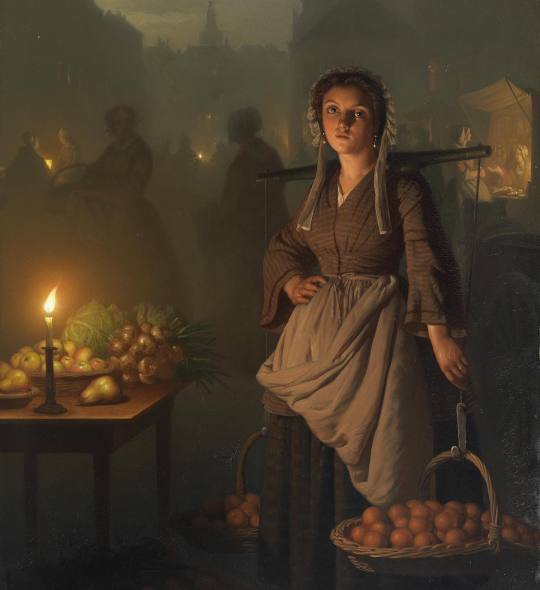
Market by Candlelight, 1865, Petrus van Schendel (1806–1870)
#candlelight#market#Petrus van Schendel#dutch-belgian painter#nighttime paintings#Monsieur Chandelle#romanticism
24 notes
·
View notes
Text


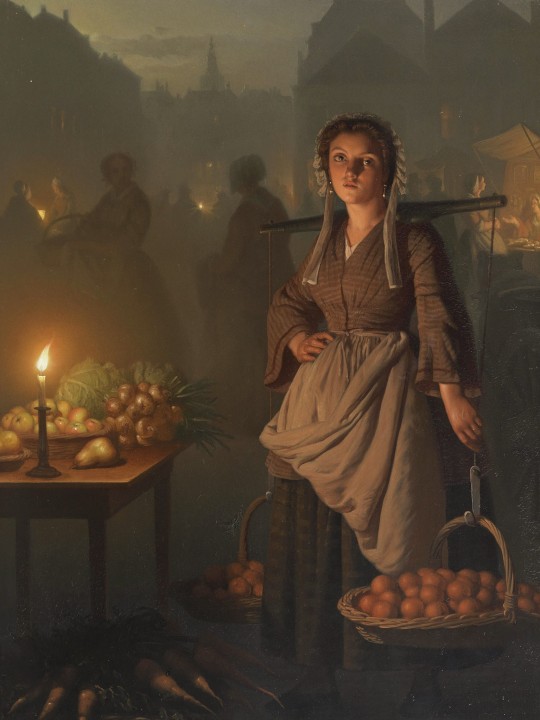
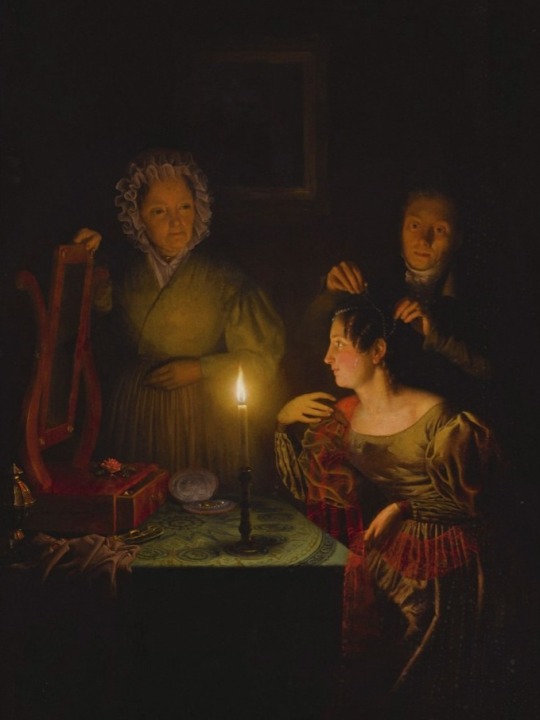
Petrus van Schendel.
#petrus van schendel#painter#gothic painting#oil painting#painting#paint#dutch#belgian#romanticism#alternative#aesthetic#dark academia#dark academic aesthetic#dark aesthetic#aestheitcs#dark#art#light acadamia aesthetic#light academia#artist aesthetic#artistic#artist
1K notes
·
View notes
Text

Henriëtte Ronner-Knip - The Family Picture (1893)
304 notes
·
View notes
Text

Pieter Huys (1519-1584) - The bagpiper and the old woman
#belgian art#flemish art#flemish painter#flemish baroque#flemish school#renaissance#Hieronymus Bosch#oil painting#fine art#paintings#Pieter Huys#pieter bruegel#Antwerp#moma#flanders#art#dutch painting#adoration of the magi#vermeer#rembrandt#garden of earthly delights
3 notes
·
View notes
Video
OST, Alfred. Vlaamsche Kunst Tentoonstelling, Amsterdam, 1918. by Halloween HJB
#Alfred Ost#vintage exhibition posters#art show#Vlaamsche Kunst Tentoonstelling#Flemish Art Exhibition#Amsterdam#artist#painter#palette#paints#paint brush#Dutch language#Nederland#Netherlands#vintage Belgian illustration#flickr
0 notes
Text

Market, candlelight (1865) Petrus van Schendel (1806–1870) Dutch-Belgian genre painter
#market#candles#light#candleight#1865#petrus#van#petrus van schendel#schendel#1806#1870#dutch#belgian#genre#painter
0 notes
Text
All Paintings
Reblogs
Those with no category for now
Blanche (Jacques-Emile)
Bridges (Fidelia)
Esteban Murillo (Bartolomé)
Gilbert (Victor-Gabriel)
Lindauer (Gottfried)
Magritte (René)
Matisse (Henri)
Monet (Claude)
Morisot (Berthe)
Parrish (Maxfield)
Paxton (William McGregor)
Pippin (Horace)
Tissot (James)
Thyer (Abbott Handerson)
Van Gogh (Vincent)
Volegov (Vladimir)
#art#arts#peinture#peintre#painting#paintings#painter#french painter#peintre français#belgian painter#peintre belge#dutch painter#peintre néerlandais#spanish painter#peintre espagnol#kiwi painter#peintre néo zélandais#pintor español#pintor#american painter#peintre américain#pintor americano
0 notes
Note
Who are your favorite artists? The art kind.
I'm a bit surprised I haven't been asked this question before!
I appreciate so many artists that it's hard to narrow it down. But based on what I can remember and what I can check on my Instagram and bookshelf, here are some of my favorites:

Gustave Doré (1832–1883) → A French artist, illustrator, and sculptor, celebrated for his intricate and dramatic engravings and illustrations. He is best known for his illustrations of classic literary works, including Dante Alighieri's The Divine Comedy, John Milton's Paradise Lost, and Edgar Allan Poe's The Raven. His skillful blend of realism and romanticism, combined with his mastery of visual storytelling, has established him as a significant figure in the history of illustration and fine art.

Vincent van Gogh (1853–1890) → A Dutch post-impressionist painter renowned for his expressive use of color and bold brushwork, which had a profound influence on 20th-century art. His most famous works, such as Starry Night, Sunflowers, and The Bedroom, showcase his unique style and emotional depth, capturing the beauty of the world around him.

Henriëtte Ronner-Knip (1821–1909) → A Dutch-Belgian painter best known for her detailed and charming depictions of domestic cats. Specializing in animal paintings, her style combined realism and a romantic touch, often portraying cats in cozy, playful, or elegant settings that captured their personalities and grace. She was celebrated for her ability to convey texture, particularly in fur, and created intimate, lifelike scenes that became popular in 19th-century bourgeois society.

John William Waterhouse (1849–1917) → A British painter associated with the Pre-Raphaelite movement, known for his romantic and mythological subjects. His art style blends elements of Romanticism and Classicism, featuring realistic figures, rich colors, and a strong focus on nature and detail. Waterhouse is best known for his depictions of female figures from mythology and literature, such as The Lady of Shalott and Ophelia, which convey a sense of beauty, melancholy, and mystery, making his work iconic in the realm of 19th-century art.

Harry Clarke (1889–1931) → An Irish stained-glass artist and illustrator. His work was influenced by Gothic art, Symbolism, Art Nouveau, and Irish folklore. This blend resulted in a distinctive aesthetic that harmoniously intertwines beauty with darker themes. Clarke is best known for his illustrations in classic literary texts, including James Joyce's Dubliners and Edgar Allan Poe's Tales of Mystery and Imagination. In these works, his illustrations masterfully balance whimsy and darkness, creating striking visual narratives that continue to resonate with audiences.

Alphonse Mucha (1860–1939) → A Czech painter and decorative artist best known for his distinctive Art Nouveau style, characterized by intricate, flowing lines, elaborate floral motifs, and a harmonious use of soft colors. Mucha's work often features idealized female figures, embodying beauty and elegance, and is heavily inspired by his fascination with nature and Slavic folklore. He gained fame for his poster designs, particularly those promoting the actress Sarah Bernhardt, as well as his decorative panels and illustrations.

J.C. Leyendecker (1874–1951) → An American illustrator renowned for his iconic magazine covers and advertising art, particularly his work for The Saturday Evening Post and the Arrow Collar Man campaign. Leyendecker's mastery of visual storytelling and branding helped shape American commercial art in the early 20th century, and he significantly influenced later artists, including Norman Rockwell.

Leonid Afremov (1955–2019) → A Belarusian-born artist known for his vibrant, impressionistic paintings created using a palette knife technique. His distinctive art style features bold colors and dynamic brushstrokes, often depicting landscapes, city scenes, and emotional moments, such as rain-soaked streets or sunlit parks.

Ayami Kojima → A Japanese artist and illustrator best known for her work in video game design, particularly as the character designer for the Castlevania series. Her art style is characterized by intricate, gothic aesthetics, combining dark fantasy elements with a detailed, ethereal quality.

Victoria Francés → A Spanish illustrator known for her evocative illustrations that blend gothic, fantasy, and romantic themes. She is particularly known for her illustrated books, including the popular series Faery Tales, which showcases her unique blend of fantasy and gothic aesthetics.

Yoshitaka Amano → A Japanese artist and illustrator renowned for his distinctive style in character design and concept art, particularly for the Final Fantasy video game series. His style fuses his interests in traditional Japanese aesthetics like those of wood block prints with Western fantasy elements. It results in ethereal forms, and a dreamlike quality, especially with Amano's use of watercolor techniques and intricate details to create a sense of movement and fluidity in his work.

Nico Delort (IG: nicodelort) → A French illustrator known for his detailed, black-and-white artworks created using scratchboard techniques. His art style is heavily influenced by the aesthetics of 19th-century engravings and woodcuts, blending elements of Gothic, fantasy, and mythological themes. Delort's work is recognized for its dramatic use of light and shadow, intricate textures, and atmospheric depth, often depicting moody, fantastical scenes.

Vania Zouravliov → A Russian-born artist known for his intricate, surreal illustrations that blend dark, fairy-tale-like themes with fine detail and symbolism. Zouravliov's work explores beauty and darkness, merging the macabre with the fantastical.

James Jean (IG: jamesjeanart) → A Taiwanese-American visual artist and illustrator known for his surreal, highly detailed works that blend elements of fantasy, mythology, and pop culture. Jean gained early recognition for his award-winning covers for DC Comics' Fables series.

Audrey Kawasaki (IG: audkawa) → A Japanese-American artist known for her blend of contemporary Japanese aesthetics and Western art influences. Her ethereal paintings often depict young women surrounded by nature, featuring intricate line work and a soft color palette. Her works are typically painted on wood panels, adding a quality that enhances the emotional depth of her subjects.

Jessica Cioffi (IG: Loputyn) → An Italian artist known for her enchanting illustrations and concept art that seamlessly blend traditional and digital techniques. Her work reflects the influence of 19th century neo-gothic and Japanese manga, and among the artist's favorite themes are witchcraft, folklore, and mystery.

Wenqing Yan (IG: yuumeiart) → A Chinese-American digital artist and illustrator known for her detailed, expressive art. Her style blends elements of anime, fantasy, and realism, featuring vibrant colors and intricate designs. Yan draws inspiration from nature, technology, and personal experiences, and she is well-known for her webcomic Fisheye Placebo and art series like Knite, which explore themes of activism, technology, and the environment.

Gretel Lusky (IG: gretlusky) → An Argentine digital artist and illustrator, Gretel Lusky is recognized for her whimsical, vibrant artwork featuring fantasy characters, and magical themes. Her style blends cartoon and anime elements, characterized by bold lines, expressive characters, and a colorful palette. She is well-known for her enchanting illustrations on social media, where she shares art tutorials and collaborates on various comics, book covers, and other projects. She is also known for her debut graphic novel Primer, an original graphic novel for DC Comics.

Margaret Morales (IG: margaretmoralesart) → A Filipino watercolor artist currently residing in America. Margaret Morales is known for her dreamy, ethereal portraits that intertwine feminine figures with elements of nature, such as flowers and animals. Her style, characterized by soft brushwork and pastel hues, creates a surreal, fairytale-like atmosphere. Her evolving work draws inspiration from art nouveau, mythology, fantasy, natural elements, Japanese/manga art, and fashion.

Tactooncat → An Indonesian digital artist known for creating illustrations that feature cats in a humorous and whimsical style, particularly cat memes and videos. Their work appeals to cat lovers and fans of lighthearted, expressive illustrations.
There are so many more, but hopefully the ones I've mentioned have caught your interest enough that you'll want to look them up. Each artist offers a unique perspective, whether through their distinctive style, use of color, themes, or techniques—there’s plenty to discover and enjoy.
#ask#anon ask#artists#art#artwork#anonymous#gustave dore#vincent van gogh#henriette ronner-knip#john william waterhouse#harry clarke#alphonse mucha#j.c. leyendecker#leonid afremov#ayami kojima#victoria frances#yoshitaka amano#nico delort#vania zouravliov#james jean#audrey kawasaki#jessica cioffi#loputyn#wenqing yan#yuumei#gretel lusky#margaret morales#tactooncat
22 notes
·
View notes
Text
Rewind the Tape —Episode 4
Art of the episode
Just like we did for the pilot and for episodes two and three, we took note of the art shown and mentioned in the fourth episode while we rewatched it. Did we miss any? Can you help us put a name to the unidentified ones? Do you have any thoughts about how these references could be interpreted?


Bust of a Woman with Her Left Hand on Her Chin
Edgar Degas, 1898 [Identified by @terrifique.]
Degas, whose work already appeared in the second episode, was a French painter of the 19th to early 20th century. His impressionist paintings often depicted ballet dancers, racehorses, and human portraits of isolation.
Krumau on the Molde, Kneeling Girl with Spanish Skirt and Self portrait in a jerkin with right elbow raised
Egon Schiele, 1912, 1911 and 1914
Schiele, whose work we have also been seeing around Rue Royale since the pilot, was an Austrian Expressionist painter, very prolific despite passing before turning 30. His work is recognizable for its transgressive portrayal of the nude body, including his nude self-portraits; but his later oeuvre features many landscapes.

The Kitten's Art Lesson
Henriette Ronner Knip, 1821-1909 [Identified by @terrifique.]
Knip was a Dutch-Belgian romantic style artist best known for paintings of animals, particularly cats and dogs of a playful nature. See more of her work here.

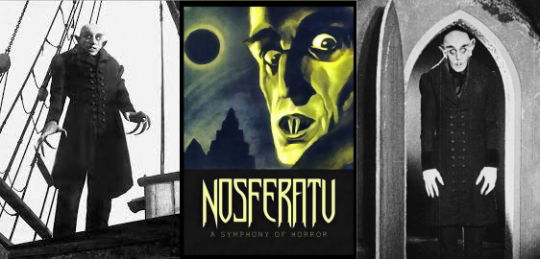
Nosferatu
F.W. Murnau, 1922
Nosferatu is a silent expressionist horror film from the legendary German director F.W. Murnau. It is an unauthorized adaptation of Bram Stoker's Dracula. While not a commercial success upon release in 1922, film historians now consider it an influential and revolutionary film in the horror genre. Since it has been in the public domain since 2019 in the U.S., it is now free to stream on YouTube.
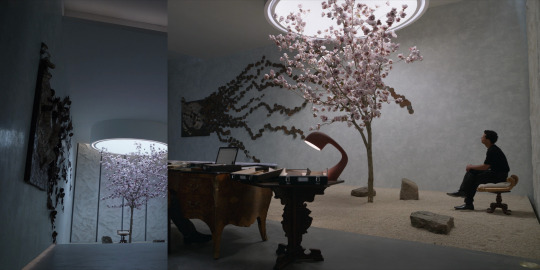
Untitled piece
Sadie Sheldon, undated [Identified by @lanepryce.]

The incredible metalwork piece on the wall of the reading room was made by a New Orleans-based artist, for New Orleans... pizzeria! It was made for Pizza Delicious, using dozens of tin cans. Sheldon describes her work as "site and time-specific projects from found materials (...) related to adaptability, renewal, and appreciating the objects of our everyday life".

New York
George Bellows, 1911 [Identified by @nicodelenfent, here.]
Several of Bellows' pieces have been featured in previous episodes. He was an American realist painter, known for his bold depictions of urban life in NYC. His work "revolutionized the conventions of the traditional American urban vista and surpassed the efforts of other contemporary urban realists" [x].
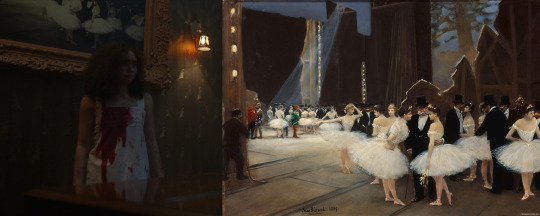
Backstage at the Opera
Jean Beraurd, 1889
Beraurd was a Russian born French painter known for his depictions of Parisian life and society during the Belle Epoque. [Identified by @nicodelenfent.]
Unidentified works
In Claudia's room: above the Knip we can see a painting of what looks like four people, maybe women sitting at a balcony. To the left of the door we can see, on top, a floral bouquet over a dark background, and below that, an illustration or painting of a woman with flowers over a bright pink background.
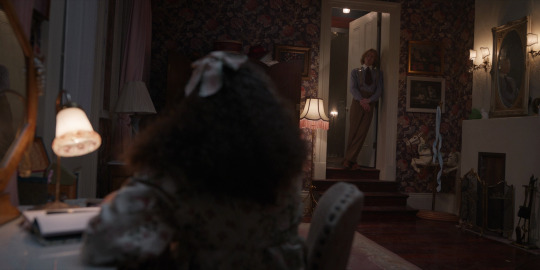

You can see all unidentified works from the first season in this post. If you spot or put a name to any other references, let us know if you'd like us to add them with credit to the post!
Starting tomorrow, we will be rewatching and discussing Episode 5, A Vile Hunger for your Hammering Heart. We can't wait to hear your thoughts!
And, if you're just getting caught up, learn all about our group rewatch here ►
#the vampire claudia#claudia iwtv#louis de pointe du lac#daniel molloy#lestat de lioncourt#vampterview#interview with the vampire#iwtv#amc interview with the vampire#interview with the vampire amc#amc iwtv#iwtv amc#IWTVfanevents#rewind the tape#analysis and meta#art of the episode#the ruthless pursuit of blood with all a child's demanding
34 notes
·
View notes
Text
me: oh god I've drawn another thing that has a similar theme to a painting I've done three years ago that's bad I need to do something new and innovative
Petrus van Schendel, Dutch-Belgian 19th century painter: y'all here's my 150th painting of some people standing around a single candle, enjoy!
130 notes
·
View notes
Text
Philippe of Belgium

Physique: Average Build Height: 6'1"
Philippe or Filip (Dutch: Filip Leopold Lodewijk Maria; French: Philippe Léopold Louis Marie; born 15 April 1960 -) is King of the Belgians, having ascended the throne on 21 July 2013, following his father’s abdication. He is the eldest child of King Albert II and Queen Paola. He is back and forth as the most fuckable member of the Belgian Royal family with his younger brother, Prince Laurent of Belgium.
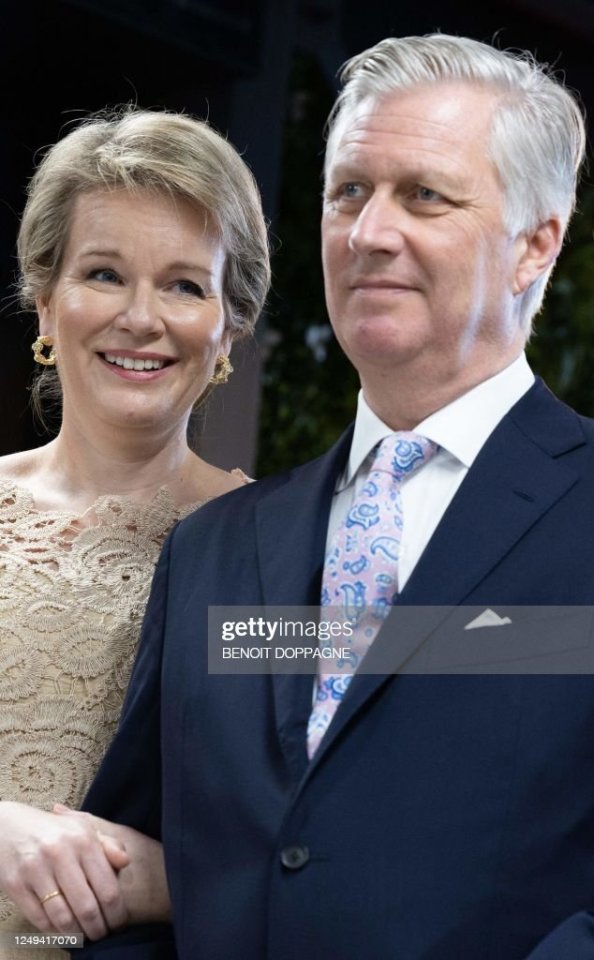
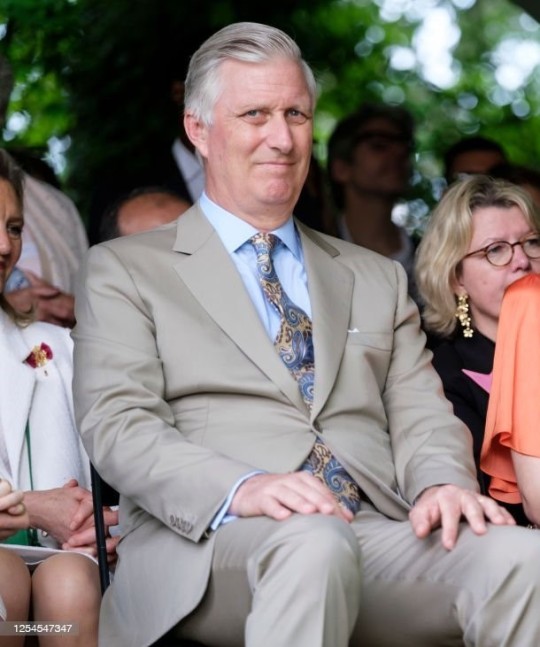



This guy is what royalty should look like. Tall, handsome, looks as good in a suit as he does in those royal uniforms when he has the rank of rear-admiral. Near perfection. If he’s looking for some side ass. A.K.A. a prince consort. I’ll be more than willing to move to Belgium and be on my knees blowing him any time he wants. What? Don’t you bend a knee every time you greet royalty? I’m just adding an extra step.
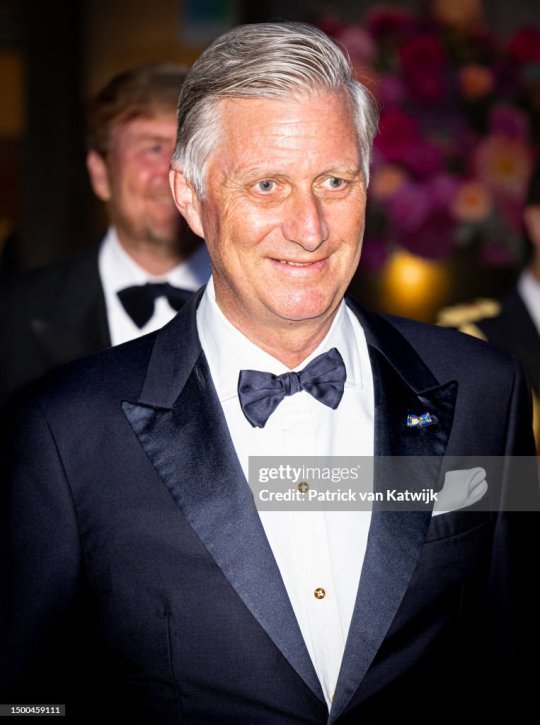




He married Countess Mathilde d'Udekem d'Acoz (now Queen Mathilde), with whom he has four children. Wait.. there were rumors that King Philippe might be gay. I’m shocked. Well, shocked there were rumors that he was gay and none for the OBVIOUS Prince Laurent. Now that I think about it. I can see it. Plus whether true or not, it makes Philippe way hotter in my eyes.


Anyway, in his free free time, he likes to read and play sports. The King goes jogging regularly, and is especially keen on kite surfing. He also plays the piano and is an avid painter. I have no other research to offer you. I'm afraid I spent all those hours when I was looking him up online, fantasizing him knighting me… with his penis.
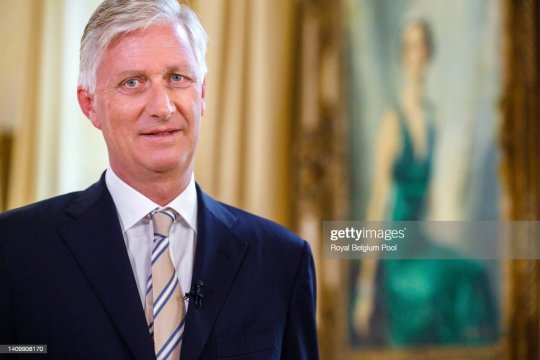
28 notes
·
View notes
Text
Alfred Stevens (1823-1906) - A Musician (c.1868)

Alfred Émile Léopold Stevens was a Belgian painter, known for his paintings of elegant modern women. In their realistic style and careful finish, his works reveal the influence of 17th-century Dutch genre painting.
3 notes
·
View notes
Text
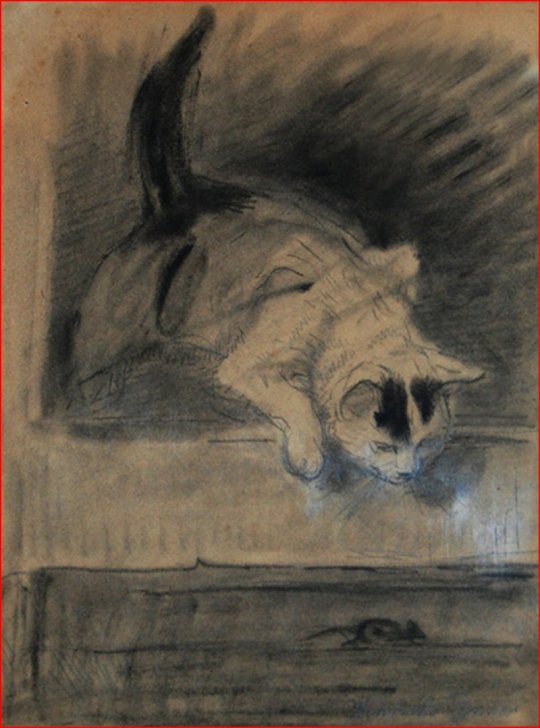
Henriëtte Ronner-Knip - Cat and mouse (ca. 1870)
200 notes
·
View notes
Text
Birthdays 10.14
Beer Birthdays
William Penn; English founder of Pennsylvania (1644)
John Molson, Jr. (1787)
Frederick Lauer (1810)
Theodore Hamm (1825)
Bobo van Mechelen (1951)
Jason Alstrom (1971)
Kim Jordan
Five Favorite Birthdays
Harry Anderson; comedian, magician, actor (1952)
e.e. cummings; poet (1894)
Thomas Keller; chef, cookbook author (1955)
Roger Moore; English actor (1927)
Eleanor Shellstrop; character on “The Good Place” (1982)
Famous Birthdays
Hannah Arendt; political scientist (1906)
Rick Aviles; comedian (1952)
Rowan Blanchard; actress (2001)
Raymond Davis Jr.; chemist and physicist (1914)
Thomas Dolby; English singer-songwriter (1958)
Jessica Drake; adult actress (1974)
Dwight D. Eisenhower; 34th U.S. President (1890)
Jay Ferguson; Canadian guitarist and songwriter (1968)
Lillian Gish; actor (1896)
Trevor Goddard; English-American actor (1962)
Johnny Goudie; singer-songwriter and guitarist (1968)
Ruth Hale; actress and playwright (1908)
Norman Harris; guitarist and songwriter (1947)
Elwood Haynes; inventor (1857)
Justin Hayward; rock singer (1946)
Colin Hodgkinson; English bass player (1945)
James II; king of England (1633)
Jennell Jaquays; game designer (1956)
Daan Jippes; Dutch author and illustrator (1945)
Allan Jones; actor and singer (1907)
Lesley Joseph; English actress (1945)
Chris Thomas King; singer-songwriter and guitarist (1962)
Dorothy Kingsley; screenwriter (1909)
C. Everett Koop; U.S. surgeon general (1916)
Vanessa Lane; adult actress (1983)
Anatoly Larkin; Russian-American physicist (1932)
Ralph Lauren; fashion designer (1939)
Natalie Maines; country singer (1974)
Katherine Mansfield; New Zealand writer (1888)
Isaac Mizrahi; fashion designer (1961)
Adolphe Monticelli; French painter (1824)
Péter Nádas; Hungarian author and playwright (1942)
Robert Parker; singer and saxophonist (1932)
A.J. Pero, American drummer (1959)
Lori Petty; actor (1963)
Joseph Plateau; Belgian physicist (1821)
Cliff Richard; pop singer (1940)
Eleanor Shellstrop; fictional character from “The Good Place” (1982)
Masaoka Shiki; Japanese writer (1867)
Arleen Sorkin; actress (1956)
Usher; pop singer (1978)
Alexander von Zemlinsky; Austrian composer (1871)
Kazumi Watanabe; Japanese guitarist and composer (1953)
Ben Whishaw; English actor (1980)
2 notes
·
View notes
Text
What If your favorite historical figure is in Ikemen Vampire Universe
My Favorite Is:
Raden Saleh Syarif Boestaman

Potrait painting Saleh Syarif Boestaman by Carl Johann Baehr
Raden Saleh Syarif Bustaman
(1811 – 23 April 1880) was born in the village of Terboyo, near Semarang on the island of Java in the Dutch East Indies (present-day Indonesia).
He was born into a noble Hadhrami family; his father was Sayyid Husen bin Alwi bin Awal bin Yahya. He was the grandson of Sayyid Abdullah Bustam through his mother, Raden Ayu Sarif Husen bin Alwi bin Awal. Through his sister, Roqayah, Raden Saleh was uncle by marriage to the famous religious leader Habib Ali Kwitang.
He was considered to be the first "modern" artist from Indonesia (then the Dutch East Indies), and his paintings corresponded with nineteenth-century romanticism which was popular in Europe at the time. He also expressed his cultural roots and inventiveness in his work.
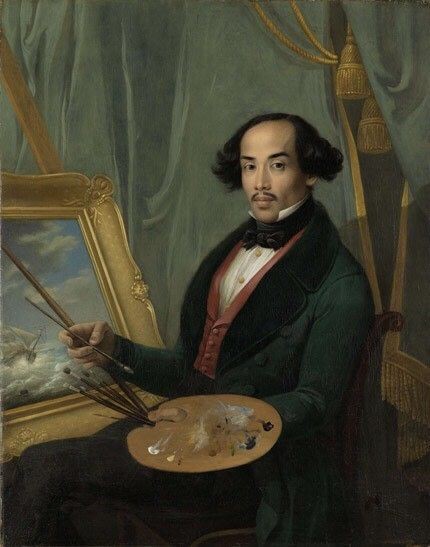
Potrait painting of Raden Saleh by Friedrich Carl Albert Schreuel in 1840.
Young Raden Saleh was first taught in Bogor by the Belgian artist A.J. Payen. Payen acknowledged the youth's talent, and persuaded the colonial government of the Netherlands to send Raden Saleh to the Netherlands to study art. He arrived in Europe in 1829 and began to study under Cornelius Kruseman and Andreas Schelfhout.
It was from Kruseman that Raden Saleh studied his skills in portraiture, and later was accepted at various European courts where he was assigned to do portraits. While in Europe, in 1836 Saleh became the first indigenous Indonesian to be initiated into Freemasonry. From 1839, he spent five years at the court of Ernest I, Duke of Saxe-Coburg and Gotha, who became an important patron.
From Schelfhout, Raden Saleh furthered his skills as a landscape painter. Raden Saleh visited several European cities, as well as Algiers. In The Hague, a lion tamer allowed Raden Saleh to study his lion, and from that his most famous painting of animal fights was created, which subsequently brought fame to the artist. Many of his paintings were exhibited at the Rijksmuseum in Amsterdam. Several of his paintings were destroyed when the Colonial Dutch pavilion in Paris was burnt in 1931.
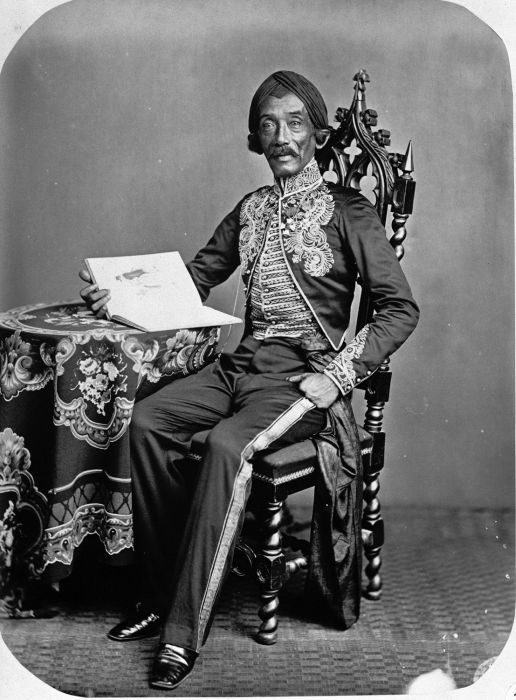
Studio Potrait in 1872
23 April 1880, Saleh suddenly fell sick. He claimed that he was poisoned by one of his servants, and subsequently died; however post-mortem examination showed that his circulatory system was disrupted due to a clot near his heart. Saleh was buried two days later in Kampung Empang, Bogor. As reported in Javanese Bode newspaper, 28 April 1880, his funeral was "attended by various landheeren [landlords] and Dutch officials, and even by curious students from nearby school.
Raden Saleh Painting
During his stay in Paris, Saleh met Horace Vernet whose painting frequently took themes of African wildlife. Compared to Vernet, Saleh's painting seems to be more influenced by the romantic painter Eugène Delacroix. This could be seen in one of Saleh's work, Hunting Lion, 1840, which has similar composition to Delacroix's Liberty Leading the People. However, Werner Kraus, a researcher in the Southeast-Asian Art Center of Passau, Germany, said that Saleh "never mentioned Delacroix. Perhaps he saw Delacroix's, and possibly Vernet's, works during an exhibition.
And one of my favorite painting by Raden Saleh is:
The Arrest of Pangeran Diponegoro
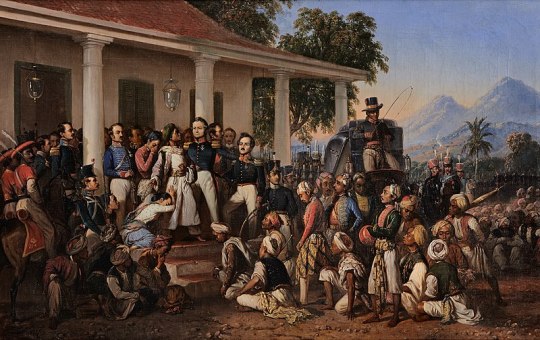
Raden Saleh is particularly remembered for his historical painting, The Arrest of Pangeran Diponegoro, which depicted the betrayal of the rebel leader Prince Diponegoro by the colonial government, thus ending the Java War in 1830. The Prince was tricked into entering Dutch custody near Magelang, believing he was there for negotiations of a possible cease-fire. He was captured through treachery and later deported.
The event had been previously painted by a Dutch painter Nicolaas Pieneman, commissioned by Lieutenant General Hendrik Merkus de Kock. It is thought that Saleh saw this painting during his stay in Europe. Saleh made significant changes in his version of the painting; Pieneman painted the scene from the right, Saleh from the left.
Pieneman depicts Diponegoro with resigned expression, while in Saleh's he appears to be outraged. Pieneman gave his painting the title Submission of Prince Diponegoro, while Saleh gave The Arrest of Pangeran Diponegoro. It is known that Saleh deliberately painted Diponegoro's Dutch captors with large heads to make them appear monstrous, as opposed to the more proportionally depicted Javanese.

De onderwerping van Diepo Negoro aan luitenant-generaal baron De Kock by Nicolaas Pieneman 1830–1835.
Raden Saleh’s work has been regarded as a sign of incipient nationalism in what was then the Dutch East Indies / Indonesia. This can also be seen it the depiction of Diponegoro's men. Pieneman had never been to the Indies, and so depicted Diponegoro's men in a more Arabic fashion. Saleh's version has a more accurate depiction of native Javanese clothing, with some figures wearing batik and blangkon.
Saleh finished this painting in 1857 and presented it to Willem III of Netherlands in The Hague. It was returned to Indonesia in 1978 as a realization of a cultural agreement between the two countries in 1969, regarding the return of cultural items which were taken, lent, or exchanged to the Dutch in the previous eras. Even though the painting did not fall under any of those categories, because Saleh presented it to the King of the Netherlands and it was never in the possession of Indonesia, it was nevertheless returned as a gift from the Royal Palace of Amsterdam, and is currently displayed at the Merdeka Palace Museum in Jakarta.
My sketch prototype
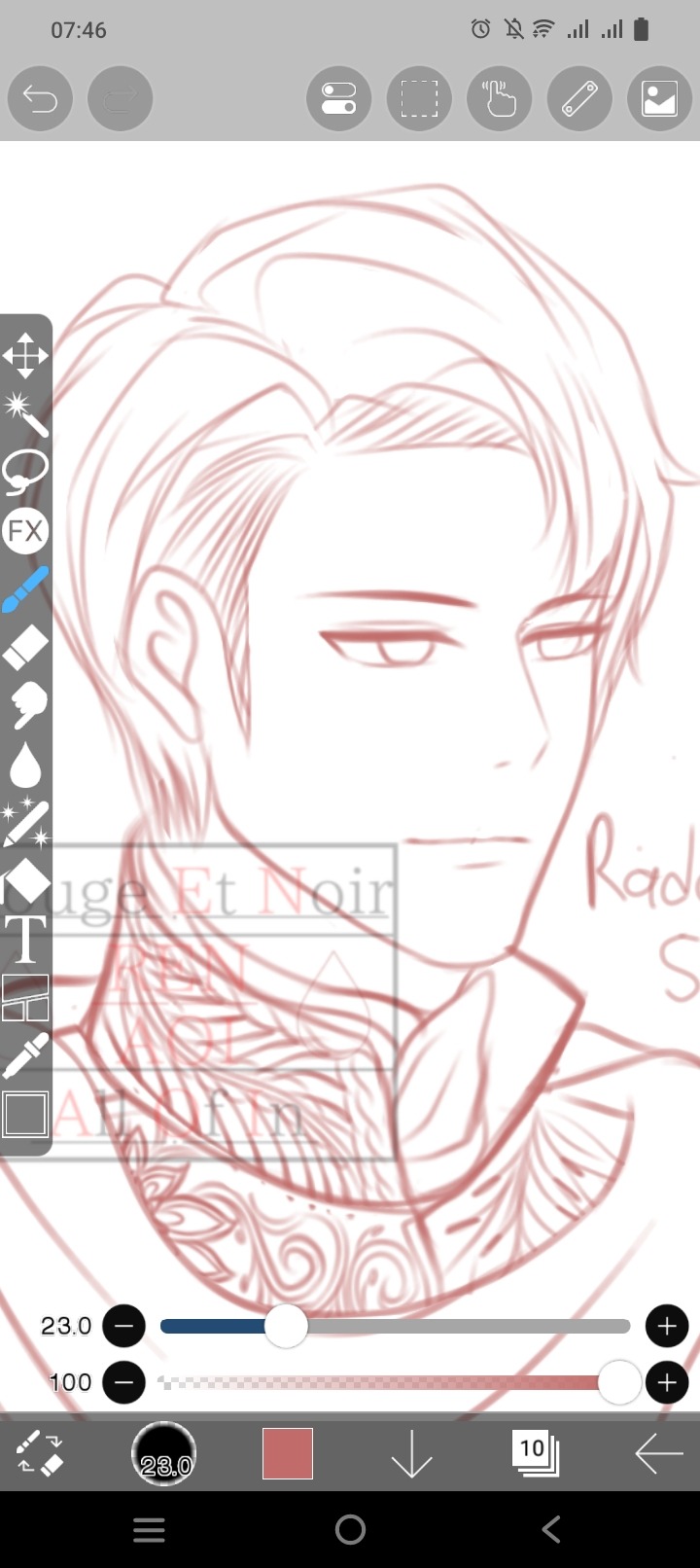
I'm still trying to improve my digital art skill. And i think i will try to write story au about him in Ikevamp universe. I'm sorry for my bad English 😭😭
3 notes
·
View notes
Text

Market by candlelight (1865)
By : Petrus van Schendel (1806–1870)
Dutch-Belgian genre painter.
5 notes
·
View notes
